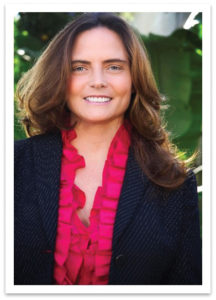Design After Disaster Start With a Plan
This has been a challenging year for many resort managers as forest fires, hurricanes and other disasters wreaked havoc across the country. It’s said every cloud has a silver lining, and that can certainly be true for resorts that had postponed needed renovations. “This can be an opportunity to use the insurance check to fund work that should have been done anyway,” says Joe Aiello, CEO and president of HM Franchise, which licenses the Hotel Makeover and Timeshare Makeover affiliates.

After the disaster relief team dries everything out and removes damaged materials, it’s time to develop a plan. “Don’t ask contractors what to do,” Aiello says. “You need to rely on design experts to create a plan with exact specifications for what must be done and what materials are to be used.” The plan should also include detailed timelines. “At the end of the renovation, guests will be checking in, so you need to be ready,” he says.
That’s good advice for any renovation, even those not inspired by floods, winds or fires. Here, Resort Trades checks in with Aiello; Robert Smith, president and chief satisfaction officer for the Allied Group; and Mary Daust, vice president at Hospitality Resources & Design Inc. to learn what that plan should entail.
Counting to Completion
To illustrate the benefits of planning, Aiello cites a company in China that built a 15-story hotel in just six days. Of course they had massive crews lined up, several cranes and all the supplies on hand. But that’s the point. “They spent a year planning before they even began building,” Aiello says. “You want to know exactly what you’ll be doing every day so the project stays on track.”

The plan should include a team experienced in commercial hospitality projects. “You can’t just go with any construction company,” Smith says. “They have to understand how to sequence through a resort renovation.” Examine the resumes of contractors and subcontractors. “If they don’t know what they are doing, you won’t be able to maintain your planned occupancy and will ruin your guest satisfaction scores.”
Another reason to use experts in commercial hospitality projects is the need to follow requirements of the Americans with Disabilities Act. “You need to make sure any designers are comfortable and knowledgeable with ADA guidelines,” Daust says. Licensed designers have a legal responsibility to conform to building codes. Also, make sure vendors are financially stable, so deposits don’t disappear.
Have the entire team scheduled in advance as the tight labor market has created a shortage of skilled labor—and recent disasters are predicted to exacerbate the situation. When labor shortages are experienced, Smith and Aiello both will bring in teams from other areas to assist. Coupling a national company with local expertise can be a good strategy. “Local contractors are familiar with local building codes and permitting agencies, so they’ll be able to identify potential issues in advance,” Smith says.

If a disaster has happened once, it could happen again. Certain areas of the country are prone to hurricanes, others to earthquakes. If that’s the case, plan your renovation to minimize damage. “If you know you may flood, consider using tile instead,” Aiello says. “Don’t use furniture with skirts in that area. Before the flood comes, move the furniture to higher ground. You can even change your landscaping to minimize wind damage. People have complained about building standards in earthquake areas, but you can really be penny-wise and pound-foolish.”
When resorts have the luxury of a longer time line, Aiello advises spacing out the renovation rather than cutting corners. “Don’t try to do it all in one year and buy junk,” he says. “Junk is junk, and it looks bad really quickly.”
Design Details
Once you have the architect’s renderings, what should go inside the newly renovated resort? Our experts have identified several trends.
Residential Feel – Although timeshare resorts are commercial properties, guests want their accommodations to feel like home. “Everyone is styling their rooms and their guest areas to be very residential, very family friendly,” Smith says. “The kitchens have gathering spots; even the public spaces have communal tables and living room styled areas.”
Sense of Place – That home-like feel should reflect the area where the resort is located. “In the Northeast, we see more earth tones, and in the Southeast and West, the styles are very different,” Smith says. Site-specific art and photography can be an important element in providing local flavor. Daust has commissioned local photographers to do shoot area landmarks, such as mountains or piers. If budgets are a concern, resorts can use simpler mattes and frames.
Flooring Guests – Two important trends will be found underfoot: luxury vinyl tile and vibrant carpets. “Resorts are using more luxury vinyl tile in the public spaces and guest rooms now,” Daust says. “It can be more resistant to salt and dirt, and easier to maintain. If damaged, sometimes just one plank can be replaced instead of having to replace an entire carpet.” According to Daust, the thickness of the product generally determines the quality level. Because installation can cost a bit more, the initial expense is about 10 to 20 percent more than carpet, Smith says, but that can be recouped because it lasts longer.
“In bedrooms, guests often prefer carpets,” Daust says, “but today’s carpets feature more vibrant colors that stand contrast with the more muted bedding that has become popular.” In a recent beachside property, the carpet featured a waving cobalt blue, light blue and green pattern.
Sheets On Top – According to Daust, the current trend is a simple white or decorative top sheet that is laundered every time with the other sheets. “Use a blanket between the flat sheet and the decorative top sheet for extra warmth,” she advises. The weight of the blanket will vary depending on weather in your region or the season. Guests prefer this setup to a comforter or bedspread they fear isn’t washed between guests. Resorts with bigger budgets can even have custom top sheets created with patterned bands that resemble a bed scarf.
Out With the Tub – In the bathroom, bathtubs are being replaced by walk-in showers, mirrors are backlit, and “comfort” (taller) toilets are becoming the norm. “These changes all help with an aging population,” Daust says. In units with two bathrooms, she advises keeping one tub for parents with small children.
Everyday Technology – Designing to accommodate the many devices guests bring along is not an option. “All rooms must have high-speed Wi-Fi (preferably complimentary), flat screen TV’s, docking stations and USB and power outlets in the lamps for easy access.” Daust advises. “In addition to travelers who want to work, the kids want to play their games.”
Judy Kenninger heads Kenninger Communications and has been covering the vacation real estate industry for two decades.




